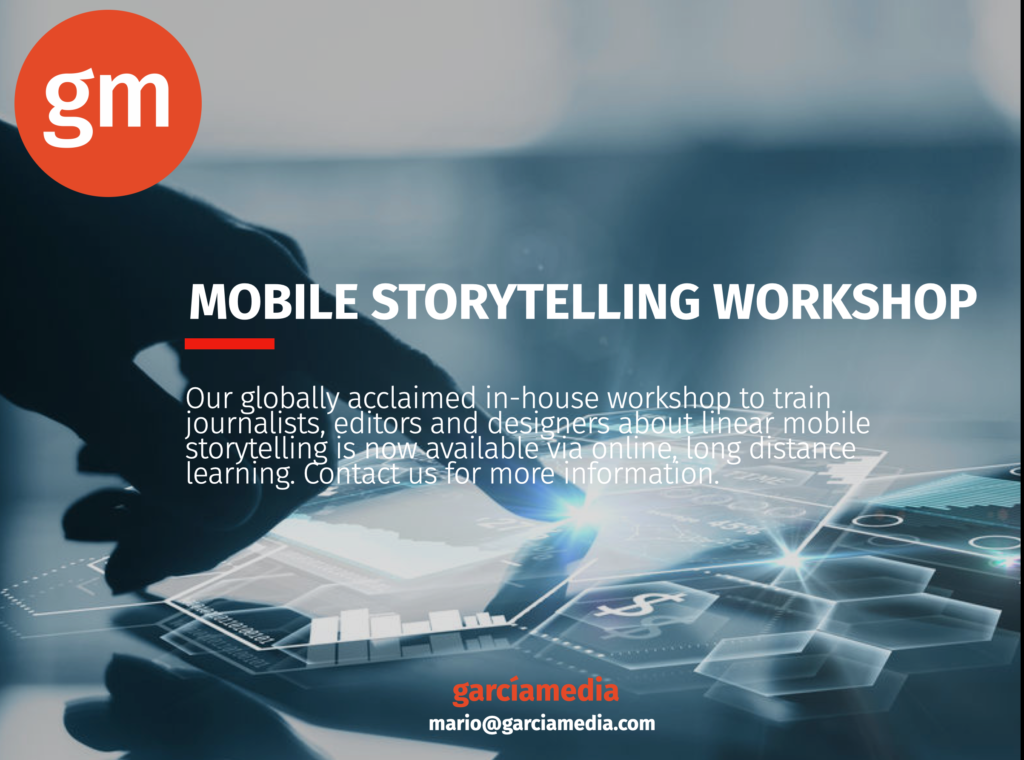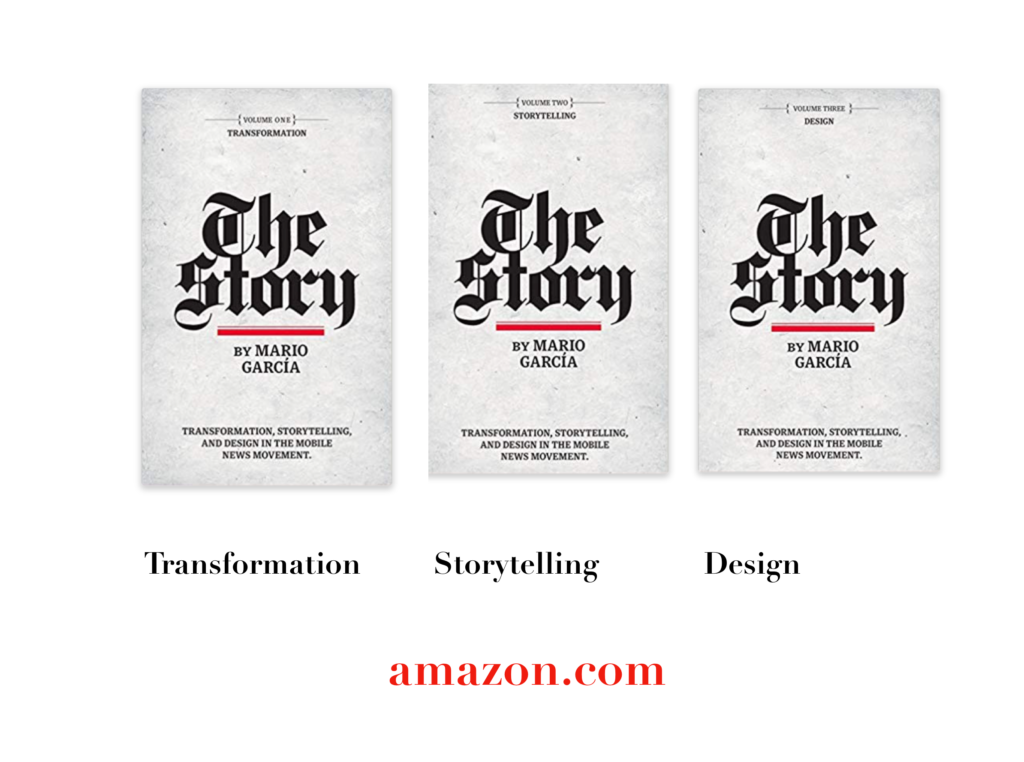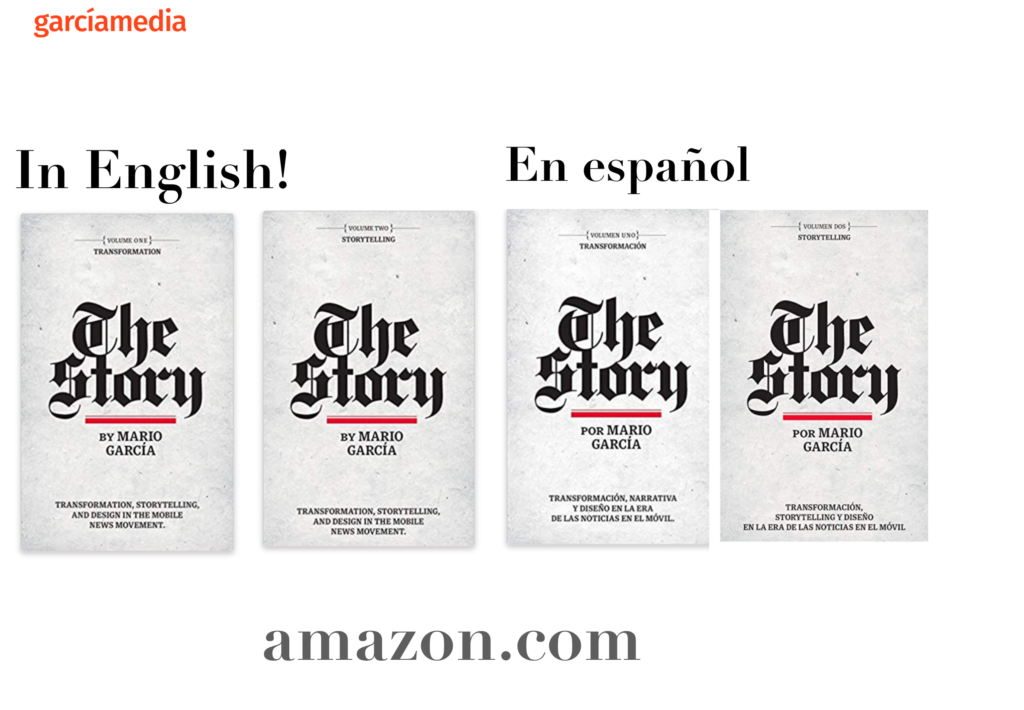It is the first week of January and at the top of my agenda is the preparation of the course syllabus for my Spring (second semester) class at Columbia University’s Graduate School of Journalism.
I usually tackle the task of putting together course content with zest and go through a lot of introspection to make sure that two things happen:
- That I improve the course from its various previous versions, adding segments that represent the state of storytelling, today especially for mobile consumption.
- That I give careful consideration to the most meaningful, functional midterm and final projects for the students to complete.
This year is different, however, and I confess that I have had initial trouble getting enough traction to get going with my course syllabus. My course is titled Multiplatform Design & Storytelling, and the School of Journalism describes it as a “production course”. Indeed, my course is hands on, with weekly assignments that require that students observe and apply what I present to them. And, so, when we study push notifications, the students are required to analyze a variety of those news alerts, describing their observations. In the same manner, students are required to analyze newsletters, headlines and, of course, mobile storytelling.
Because I created this course to be a combination of visual journalism with mobile storytelling, we discuss both visual aspects of the craft, as well as writing and editing. Isn’t that what real journalists do in newsrooms that get it right?
What is different today?
As much as my course will continue to be primarily about strategies and practical applications of design and visual journalism, I would be remiss and would consider it an omission on my part if I did not start on Day One with two issues that are doing the Perez Prado mambo in my head, with the kind of music that everyone in our profession—but, particularly, those of us who teach journalism—-should be paying attention to.
The two issues are:
- People want news outlets to present a range of views and let them decide–it is called impartial reporting.
- Being a journalist today carries labels–and it may even be dangerous.
I am aware that these are topics that are definitely discussed more fully in other courses at our School, and I don’t pretend to abandon the scope of my own production course in any way. However, I will devote some time in my first day lecture to touch upon the two. Fortunately, I can refer the students to various pieces where the topics are discussed more in depth:
People want news outlets to present a range of views and let them decide–it is called impartial reporting: This is not new, and for those of us who studied journalism in the 60s and beyond, this was a lesson that we learned early. Today, however, the lines between impartial reporting and opinion are somewhat blurred.
I will tell my students in that first lecture that on this first day of class we still don’t know each other’s political views, and that such is the way I will want it to be when they turn in their last assignment of the semester. I find some degree of satisfaction knowing that is my small contribution to help the next generation of journalists with this important task of emphasizing impartiality.
Highlight:
As the BBC observes, ‘defining impartiality is easy … it means reflecting all sides of arguments and not favouring any side’.1But what this looks like in practice can become complicated as journalists grapple with different topics, public debates, and ways of presenting engaging news. Moreover, many newspapers across the world have long had a clear editorial stance and, in the US, Fox News has demonstrated how money can be made from catering to partisan audiences in broadcast. Meanwhile, the BBC has renewed its commitment to impartial journalism, as have some commercial news media, such as Reuters. But partisan viewpoints are now more accessible than ever, especially online, and they can be attractive to audiences. This all raises the question: how important is impartial and objective journalism to audiences?
Being a journalist today carries labels–and it may even be dangerous: Let me phrase it this way–even if the Webster’s Dictionary has not rated it so, the word journalist has become bad for many, and, indeed, as The Washington Post suggests, dangerous for some.
I must tell you of an experience I myself had while attending a Christmas gathering at the home of friends in Florida. An older gentleman who was a guest sitting next to me at dinner found out that I was a professor of journalism teaching at Columbia. Those two facts: “journalism professor” and “Columbia” triggered an angry reaction for him:
“Well, I have never had the opportunity to sit next to a journalist,” he said, “but I am glad I am right now. You all are amoral, and you are taking this country down with the way you report the news and what you write about. Do you teach your students how to write fake news?.”
This went on for about 40 minutes until I respectfully pushed away the plate of food in front of me and told the gentleman: “I have come here to celebrate Christmas and not to have my profession insulted. So, excuse me.”
The man eventually approached me at the end of the evening to “apologize for my behavior with you tonight, but I am passionate about my political beliefs.”
To which I answered: “Apology accepted, but I am also passionate about my profession and feel pride in the work we journalists do.”
This is not the first time that I have had to engage in a defense of our craft at a gathering lately. I will warn my students that this is part of what they will need to do, unless perceptions change.
The Washington Post published an opinion piece in which the issue of being a journalist today—and the dangers involved—was a centerpiece. Journalists in the U.S. are increasingly becoming the targets of violence, writes Jason Rezaian, stating that members of the press “could start seeing an increase in the types of threats that many of our colleagues in many illiberal societies already face.”
For more:
https://www.washingtonpost.com/opinions/2022/01/03/journalism-us-threats-press-freedom/
Highlight:
The year 2022 is not looking particularly promising for press freedom. In fact, the United States is one place where journalists could start seeing an increase in the types of threats that many of our colleagues in many illiberal societies already face…..
If we don’t take corrective measures quickly to increase media literacy and slow the spread of disinformation, journalists working in the United States will become bigger targets for those who disagree with the information and perspectives we disseminate.
Introspection is always good and often beneficial, in whatever profession. I am happy that I am having these thoughts as I prepare my course syllabus, and I know that students will grasp these thoughts and think about them as the semester begins.
Happy New Year!
Our mobile storytelling workshops now available remotely

Professors: get your review version of The Story on time for fall classes
As an academic, I know the importance of having the right tools to advance our students, especially on the important subject of mobile storytelling. Please drop me an email if you would like to sample The Story in its digital edition: mario@garciamedia.com
Start writing or type / to choose a block


The full trilogy of The Story now available–3 books to guide you through a mobile first strategy. Whether you’re a reporter, editor, designer, publisher, corporate communicator, The Story is for you! https://amazon
TheMarioBlog post # 3341